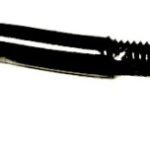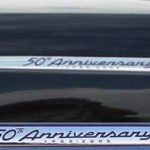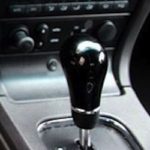
Almost everyone is familiar with the famous ‘Ford Blue Oval’ logo. But few know the story about how that iconic logo was almost changed. In 1966, Paul Rand, a famous graphic designer who created the logos for IBM, ABC, Westinghouse, UPS, Next Computer — and Enron, was hired by Henry Ford II to rethink and modernize the familiar scripted oval Ford logo.
But Henry Ford II decided not to change the logo. “According to Rand, it was too radical a switch,” said Steve Heller, graphic design historian and the author of the book “Paul Rand.”
According to Allen Hurlburt, a graphic designer writing in Communication Arts, “After extensive research and considerable design exploration, a new style was worked out, and a handsome printed and bound presentation was prepared in a limited edition for the eventual review by Henry Ford II. After some deliberation, Mr. Ford finally decided that, when it came to the family name, what was good enough for his grandfather was good enough for him.”
In 1966, the script and oval was far less established than it is now. It was not used on a Ford car until the Model A in 1928, although the radiator of the Model T was accented with the classic Ford script.
A similar script was first used in advertising at Ford around the time the company was established in 1903. Legend says it was the creation of Childe Harold Wills, an engineer and one of Ford’s first executives, who borrowed the script from his own business cards.
It is rendered in Spencerian script, also used in the Coca-Cola logo. Spencerian was a form of handwriting devised by Platt Rogers Spencer around 1840 as a modern, quickly written, clear script for business. It was widely taught in schools until being edged out by the faster Palmer method.
By 1906, a revised form of the Ford name was introduced with wings or tails on the F and D. The Ford script in both forms appeared on some parts of cars and on company letterhead. The Ford historian, Bob Kreipke, says that the first use of an oval — actually a shape more like a football — came in 1907 without the script.
Around 1910-12, Ford employed a winged triangle logo with the script and the slogan “The universal car” in its signs and advertising, rendered sometimes in blue and sometimes in orange.
In the 1950s, a shield-and-crown logo was seen on some Ford automobiles. It resembled the Cadillac logo, which also had a shield and crown. (At the recent Detroit auto show, the Ford designer, Freeman Thomas, sported one of the shield-and-crown logos in his lapel.) The blue oval then disappeared for a while, turning up again on cars in 1976. For the company’s centennial in 2003, the logo was redesigned with a more rounded, shaded look.
Ford’s blue oval with script was also among the assets pledged as collateral in the 2006 deal that gave the company its multibillion-dollar line of credit. So Henry Ford II may have been right not to change what has become one of the most recognized logos in the world.

Source – New York Times – Phil Patton





